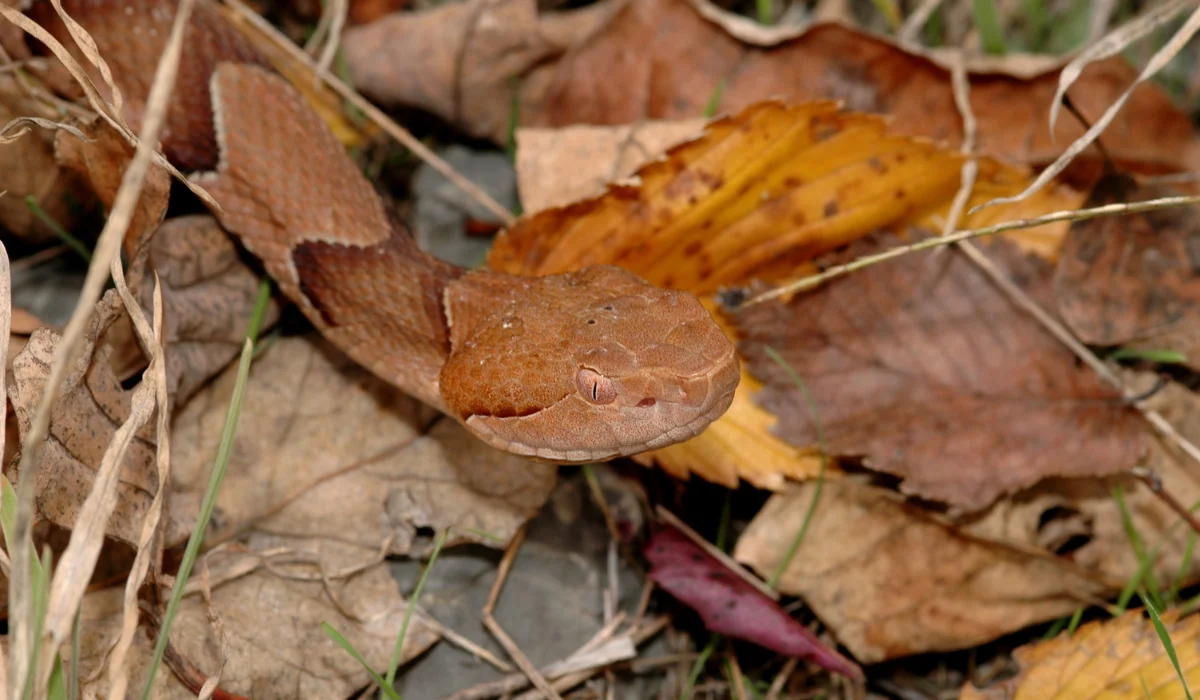Ever wondered what types of venomous snakes might be lurking in the bayous and swamps of Louisiana? Louisiana is home to several venomous snakes, including the cottonmouth, copperhead, and several species of rattlesnakes.
Keep reading to uncover more about these fascinating yet feared creatures and what to do should you encounter one.
Key Takeaways
- Louisiana has several venomous snakes, such as the Eastern Diamondback and Timber Rattlesnake.
- Staying calm and observing from a distance is important when encountering venomous snakes.
- Attempting to handle or provoke a venomous snake significantly increases the bite risk and should be avoided.
- Contact local wildlife experts or pest control professionals for snake removal when necessary.
COMMON VENOMOUS SNAKES IN LOUISIANA AND HOW TO IDENTIFY THEM
Louisiana has several venomous snakes, each with unique characteristics and habitats. Below is an overview of the most notable species to be aware of:
Eastern Diamondback Rattlesnake

The Eastern Diamondback Rattlesnake is one of Louisiana’s largest venomous snakes. It is known for its distinctive diamond pattern in yellow rings on a gray or brown body.
This snake can reach up to eight feet long. It features a rattle at the tail’s end that warns when threatened. Preferring dry, sandy areas or coastal forests, the Eastern Diamond is an elusive snake that avoids human contact.
Timber Rattlesnake

The Timber Rattlesnake, or Canebrake Rattlesnake, is recognized by dark V-shaped crossbands on a light tan or gray body featuring a reddish-brown stripe down its back.
Typically found in forested hills and swampy lowlands, this snake can grow up to six feet and has a sturdy body with a distinct rattle. The rattle’s sound serves as a warning, signaling its presence and desire for space.
Eastern Copperhead Snake

The Eastern Copperhead is a common venomous snake in Louisiana, identified by its light brown or tan body with darker, hourglass-shaped crossbands. This viper thrives in wooded areas, rocky hillsides, and streams with plentiful rodents.
While not aggressive, it will defend itself if provoked. Though rarely fatal, its bite can cause significant discomfort and requires medical attention.
Northern Cottonmouth (Water Moccasin)

The Northern Cottonmouth, or Water Moccasin, thrives in swamps, slow-moving streams, and the Mississippi River. It can also travel on land, sunbathing on rocks or logs near water.
Its thick, dark olive or brown body often appears nearly black when wet. Often mistaken for water snakes, this species is known for displaying the white lining of its mouth when threatened, earning its name.
Pygmy Rattlesnake

The Pygmy Rattlesnake is a smaller venomous species, typically reaching up to three feet long. It has a mottled gray or brown body with a distinct reddish stripe down its back. This snake favors pine forests and sandy areas.
Despite its size, the Pygmy Rattlesnake’s venomous bite warrants caution. Found primarily in southeastern Louisiana, it can be assertive when threatened.
Coral Snake

Two species of the highly venomous Coral Snakes are found in Louisiana. Their bites can be fatal if not treated promptly. To set them apart, here’s a comparison of their features:
| Features | Harlequin Coralsnake | Texas Coralsnake |
|---|---|---|
| Appearance | Bright red, yellow, and black bands | Like Harlequin, but often with more muted colors |
| Size | Typically smaller, around 2-3 feet | Can reach up to 4 feet, but usually smaller |
| Behavior | Secretive, often found in moist, forested areas | Like Harlequin, but often found in drier, more open habitats |
WHAT TO DO IF YOU ENCOUNTER A VENOMOUS LOUISIANA SNAKE
Back Away Slowly and Give the Snake Space
When encountering a venomous snake, remain calm and back away slowly to avoid provoking a defensive strike. Maintain eye contact while increasing your distance, ensuring the snake has enough room to escape without feeling cornered.
It prefers to retreat when given the chance, so standing still as it moves away lessens risk. Slow movements also help avoid startling other nearby wildlife, such as amphibians or even an alligator.
Do Not Attempt to Handle or Provoke the Snake
Never handle or provoke a venomous snake. This greatly increases the chance of a bite. Most snake bites happen when people try to move snakes. If the sighting of the species of snake poses a risk in a populated area, contact local wildlife officials or pest control professionals for safe removal.
WHEN TO CONTACT A PROFESSIONAL FOR SNAKE REMOVAL
People living in Louisiana might occasionally encounter snakes in their yards or even inside their homes. If you spot a snake with a distinct triangular head or peculiar patterns, contact pest control. These features often hint at venomous species.
Whether you’re in Baton Rouge or New Orleans, seeking expert help should be easy. For immediate intervention for a severe infestation, let Lajaunie’s snake specialists tailor a solution that’s right for your home.
For more information about our services, visit our service page.
 By: LaJaunie's Pest Control
By: LaJaunie's Pest Control 


